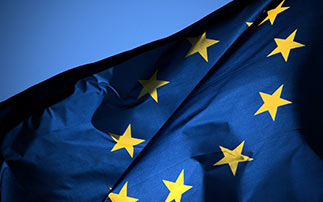The EU is committed to supporting Ukrainian refugees fleeing the Russian invasion and the countries hosting them. Its main instruments for doing so are its funds, which fall into three main families: the European Structural and Investment Funds (ESIF), direct access funds, and external cooperation funds. This article aims to explore how these three categories of funds have taken on the appearance of European funds for refugees. It will also question the limits and weaknesses of the use of European funds for refugees.
1. External cooperation: funds that have partially adapted to the Ukrainian crisis
1.1 An active response from humanitarian aid and the European Peace Facility (EPF) from February 2022
External cooperation funds are used to finance thematic programs such as peace, stability or conflict prevention. Some instruments have stood out. 143 million in humanitarian aid were allocated to projects for war-affected civilians, and 330 million euro to an emergency aid program to provide access to food, education, health care, and small-scale reconstruction of civilian infrastructure. A second instrument that stood out was the European Peace Facility (EPF). On February 27, it was established that the EPF would disburse 500 million euros. A few days later, these funds were doubled, and a few weeks later, they were increased again by 500 million euros, reaching a total of 1.5 billion euros. But apart from these few exceptions, the rest of the external cooperation funds have put few resources towards Ukrainian refugees.
1.2 A relatively inactive Neighbourhood, Development and International Cooperation Instrument (NDICI)
The response of the main external cooperation fund, the Neighbourhood, Development and International Cooperation Instrument (NDICI), has been mixed. While there are some grants for European refugees, they are small and no call for proposals for Ukrainian refugees has been published. This is surprising at first glance, but the reason is that this is a new instrument for the period 2021-2027, and negotiations are still ongoing with EU partners on the general and thematic framework of the instrument. Indeed, many previously separate instruments are being merged into one to make the EU more financially flexible in its actions.
2. Two other families of funds that stood out: ESFs and intra-community programs that look like European funds for refugees?
2.1 Funds that clearly adapt the content of their programs
The European Structural and Investment Funds and intra-community programsdirect access funds were not originally intended to be used to deal with war. However, they have changed their content to adapt to this crisis. Specific calls for projects have been opened, for example “Mental health assistance for displaced persons from Ukraine” (EU4Health). Specific programs have been launched, including the MSCA4Ukraine program, which is part of the Marie Sklodowska-Curie actions (Horizon Europe) to help displaced researchers continue their work in institutions in Europe. Finally, exceptional measures have been put in place. The Erasmus+ program provides for Ukrainian students to be hosted by education and training institutions involved in Erasmus+ cooperation and mobility projects. Another example is the CARE proposal (Cohesion Policy), which aims to provide emergency assistance covering the basic needs of people fleeing Ukraine through various means:
- Facilitating access to temporary accommodation, food and water supplies or medical care
- Contributing to the provision of personnel or infrastructure equipment
- Putting in place solutions for long-term integration: investment in housing, education, employment, health, social inclusion and care…
2.2 European programs that change their rules
In addition to changing their content, European funds are changing their rules. For example, the Horizon Europe program has stopped its commitments to new cooperation projects with Russian entities until further notice, and has suspended all payments to Russian organizations under existing contracts. Above all, European funds have become more flexible by extending calls for projects and making their use more flexible. This is particularly the case with the CARE proposal, which introduces into the 2014-2020 cohesion policy the flexibility needed to quickly reallocate available funds:
- 100% co-financing for funds mobilized under the 2014-2020 cohesion policy will be extended for 2021-2022
- A Fund will be able to support measures to support people fleeing Ukraine normally financed by other funds
- Reporting and program modification requirements will be simplified.
Finally, the regulation of the Asylum Migration Integration Fund (AMIF) and the Home Affairs Fund has been amended to extend the implementation period of the funds and to release unspent amounts.
3.Sufficient European funds for refugees?
3.1 Insufficient funds in the medium and long term
Nevertheless, raising these funds was possible because we are at the end of the 2014-2020 budget period, and there is still unused money. The situation would have been more complicated if it were in the middle of the period. Moreover, for the countries hosting Ukrainian refugees, the EU’s approach will be insufficient in the long run: new funds are needed. Slovakia’s Deputy Prime Minister for Regional Development, Veronika Remisova, says that “Slovakia and other countries on the front line of the refugee crisis need much more help from the EU, because the remaining EU funds cannot cover all their expenses, and in particular, are not intended to solve this crisis”. This statement highlights that some question the role of the cohesion policy in the Ukrainian crisis because it “is not a tool for crisis support, it is a tool for strategic planning, and that is why we have a seven-year plan” explains for example the Green MEP Nicklas Nienass.
3.2 Towards the creation of new European funds for refugees?
But the European institutions are more cautious, even skeptical, about the creation of new funds, as illustrated by the statement of the European Commissioner for Cohesion: “We know that obtaining additional funds requires a lot of negotiation, but we have to answer the fundamental question. What do you do with the available ones? Furthermore, the EC ignored the proposal to set up a dedicated health fund for Ukrainian refugees. The Health Commissioner considers that “Significant funds are available for support of health expenditure if Member States decide to use them for this purpose.” But the EU is considering setting up a solidarity trust fund with Ukraine. Its functioning is still unknown, but it would aim to meet the immediate needs of citizens and provide liquidity for longer-term support to the authorities. Finally, on May 4, 2022, the President of the European Commission presented a recovery plan for Ukraine that would help the country rebuild once the war is over.


